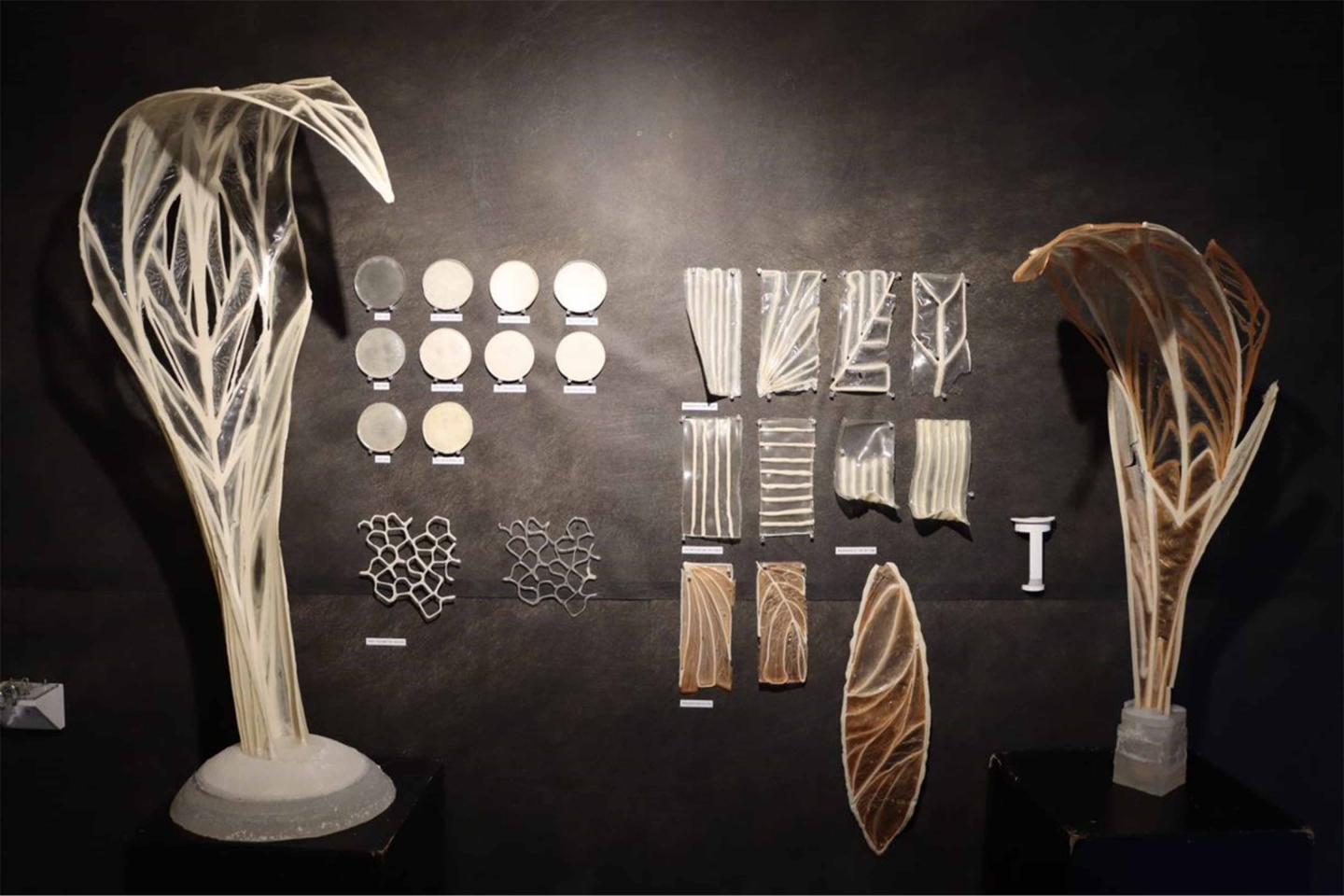Polymeter leaf is a 1.5m high installation and is composed of two main biological materials, cellulose and carbonic acid. We draw inspiration from leaves and insect wings in nature. The functional facade shows how the skeleton and skin are connected as a whole, and the transparent and opaque areas form an interesting interaction with light.
In nature, there are many biological materials that we can use. IIn this installation design, we play with the functional gradient of the material formed due to the different proportions of the main components of the material, and explore how this functional gradient is closely integrated with the design. At the same time, biological materials are used as the main construction materials so that the entire structure can be degraded in water, and the materials can also be recycled.
Our construction mainly uses cellulose and calcium carbonate. Cellulose is widespread and exists in the cell walls of plants. Calcium carbonate is the basic component of stone such as limestone and marble in nature. We take advantage of the most abundant biopolymers on earth, through digital design and robotic manufacturing to achieve a new attempt.
The main type of cellulose we use in the construction process is HEC.The full name of HEC is hydroxyethyl cellulose.Cellulose is a fiber that makes up plant cell walls, it's found in all plant foods. Hydroxyethyl cellulose is a gelling and thickening agent derived from cellulose. It is widely used in cosmetics, cleaning solutions, and other households. Through doing experiments of making material with different HEC & H20 percentages, it is found that hec has great transparency and viscosity, but its strength is not enough. In the process of material testing, we added calcium carbonate, which is a common substance found in rocks as the minerals calcite and aragonite. The process of adding calcium carbonate effectively increases the strength of the material, but reduces the transparency to a certain extent. We conducted a combination test of different proportions of calcium carbonate and HEC, finally choosing a gradient of material with different physical functionality, extrudability and transparency level.
After choosing the proper gradients of material, we sent the material sample to the School of Chemistry for strength, transparency and other physical properties tests to ensure stable strength and light transmittance.
Printed materials have different drying times. By natural dehydration on the plane, and then demoulding after the material reaches a certain strength, the material will retain the shape of the mold surface. In this way, the design can have greater flexibility to form different morphological surfaces.
There are many examples of weaving in nature. The veins of leaves, insect wings, the relationship between leaf veins and mesophyll tissue, the delicate bones and transparent skin of insect wings all provide inspiration for our design. By transitionally printing materials with different strengths and transparency on the horizontal plane, a whole material with different strength gradients is formed. The transition from the highest strength material to a weaker but more transparent material is like the connection between the skeleton and the skin. At the same time, we strengthen the areas of the overall structure that are more stressed by increasing the number of layers of material in the vertical direction.
Before weaving and printing, due to the different extrudability and fluidity of composite materials with different proportions of hec and calcium carbonate, we designed corresponding iterators for these materials with different characteristics to achieve the printing of different thickness lines. At the same time, combined with the difference in the speed of machine movement and the height from the printing surface, a series of corresponding programming parameters are summarized.
The two biomaterial leaf-shaped pavilions that were finally designed were displayed at the university of virginia.
2022
2022
The University Of Virginia
Yizhuo Chen, the University of Virginia MArch
Yi Zhu, the University of Virginia MLA
Junyi Wu, the University of Virginia MArch
Instructor: Ehsan Baharlou, Assistant Professor of Architecture, Advanced Technologies, the School of Architecture at the University of Virginia.










